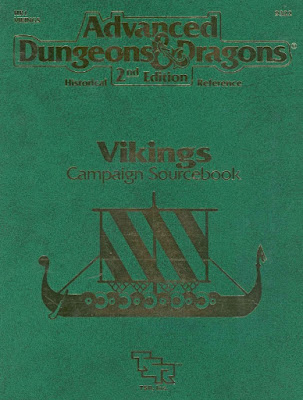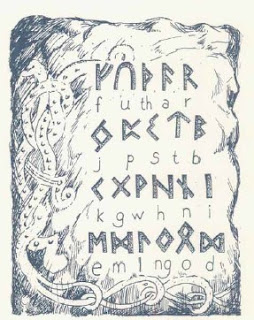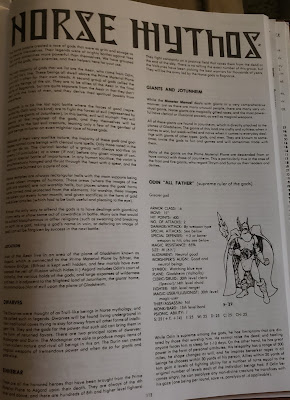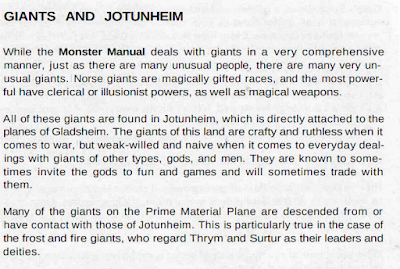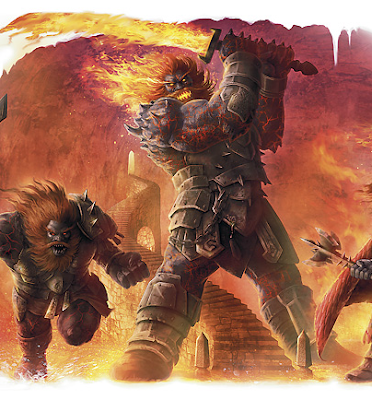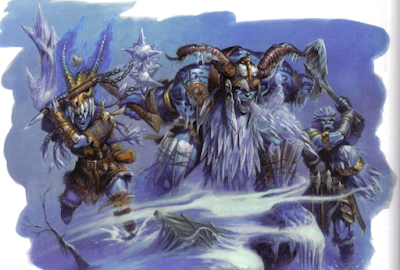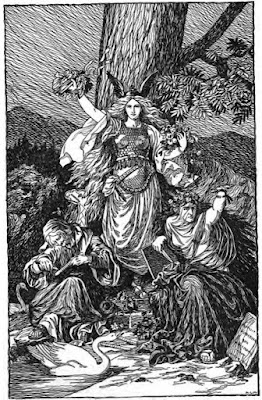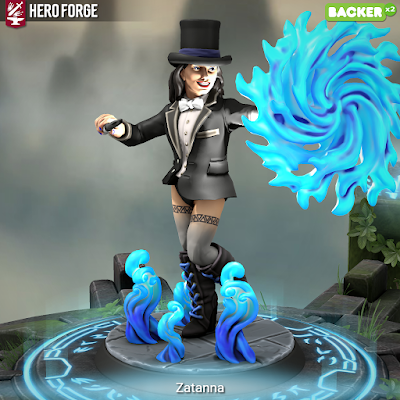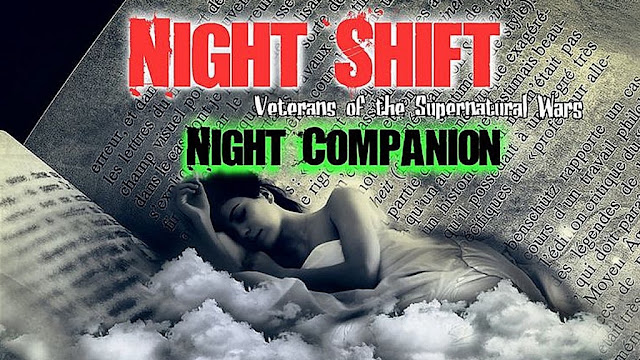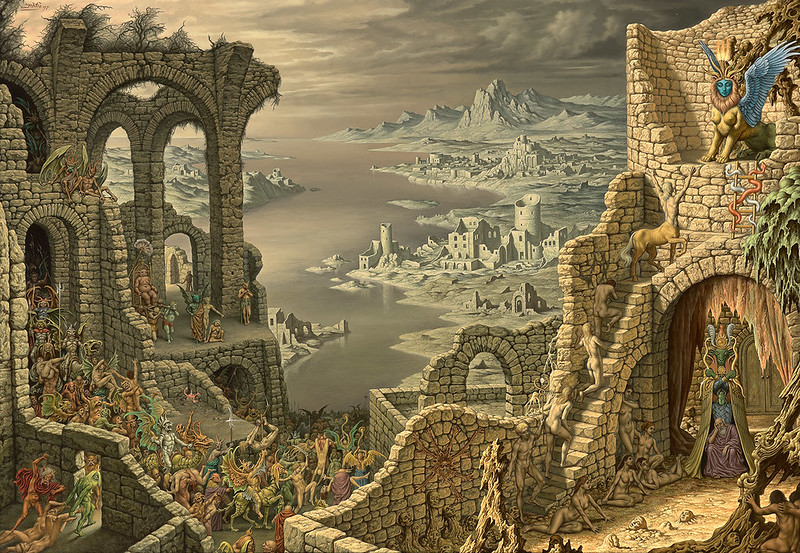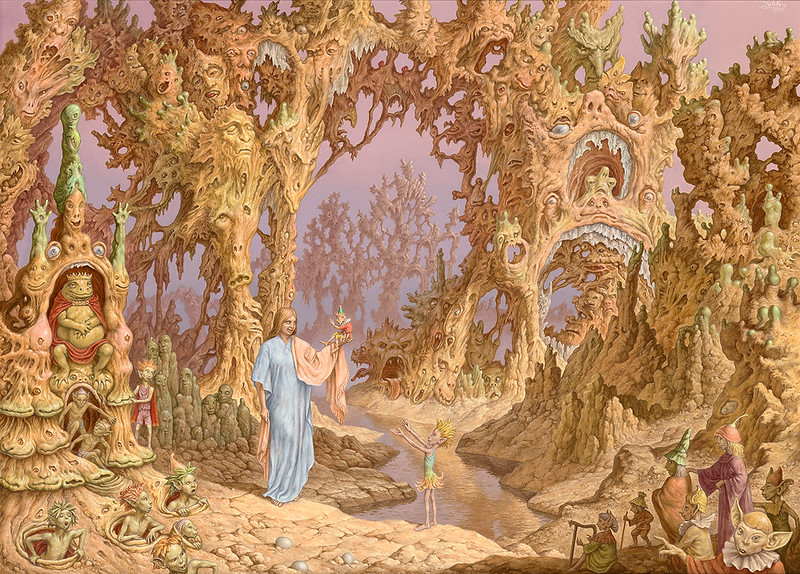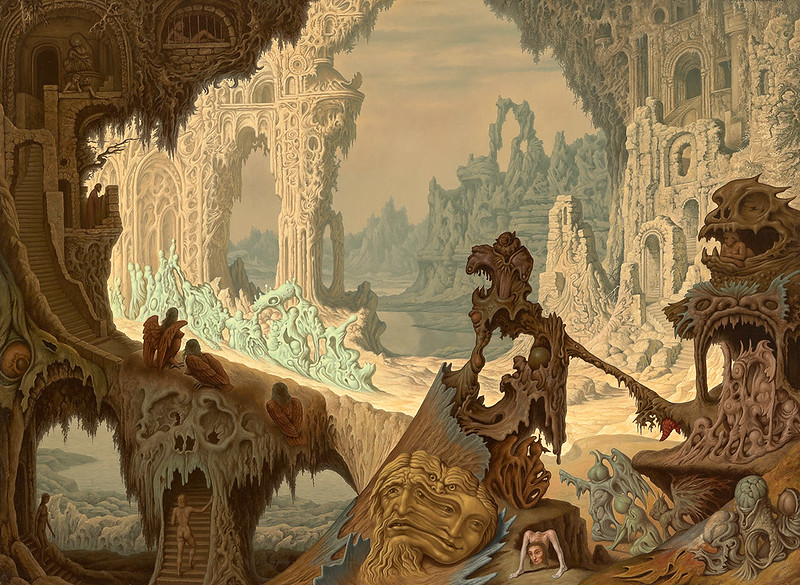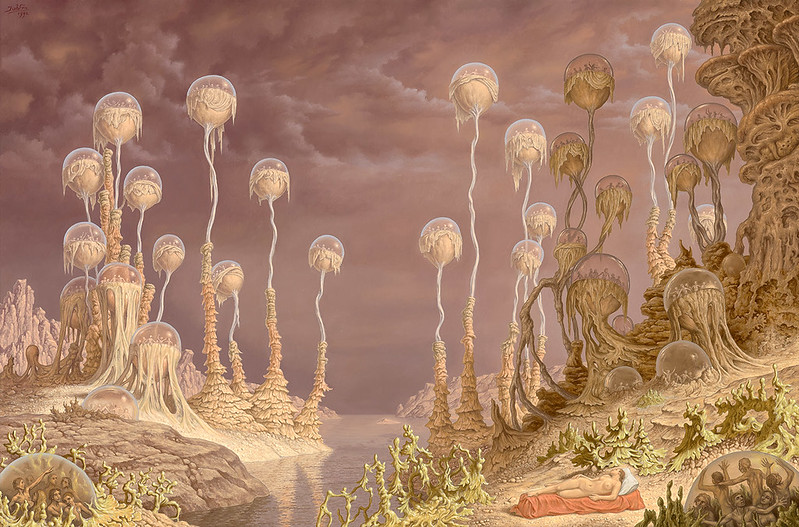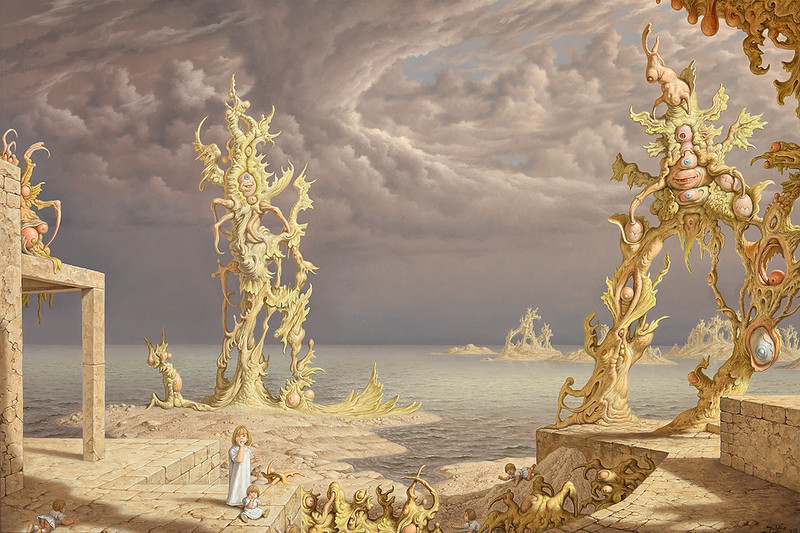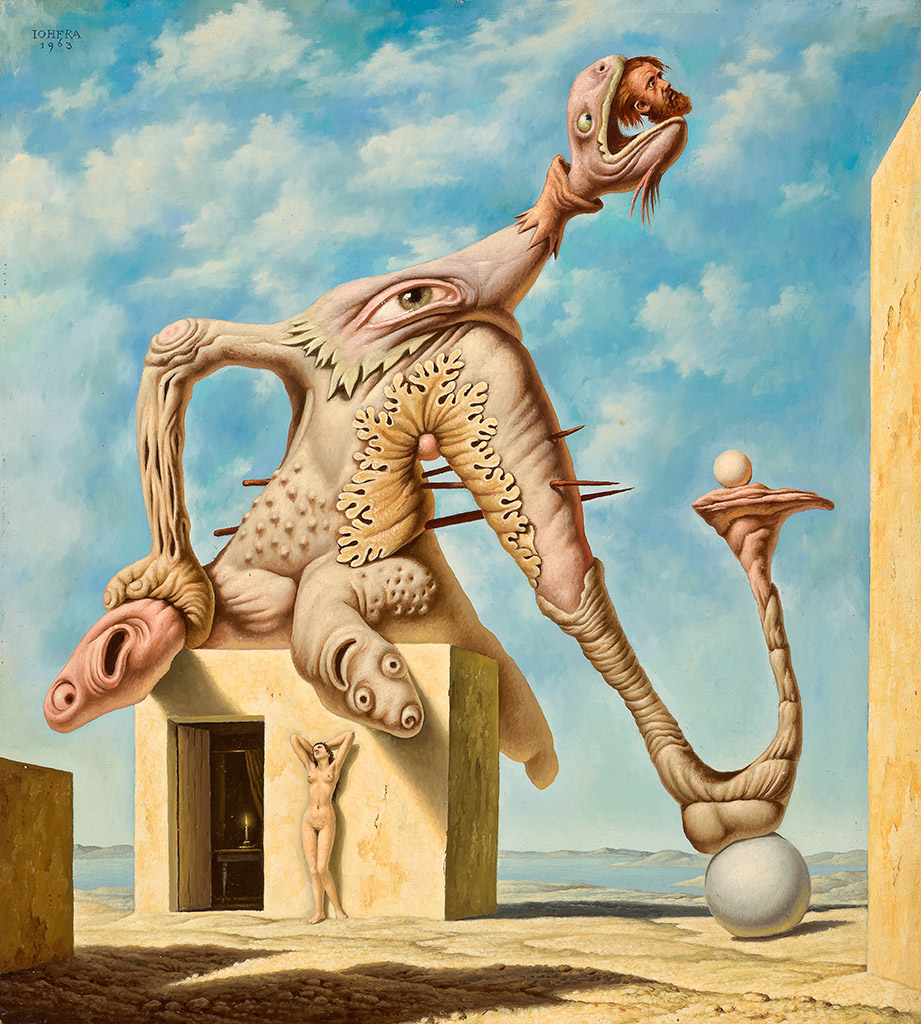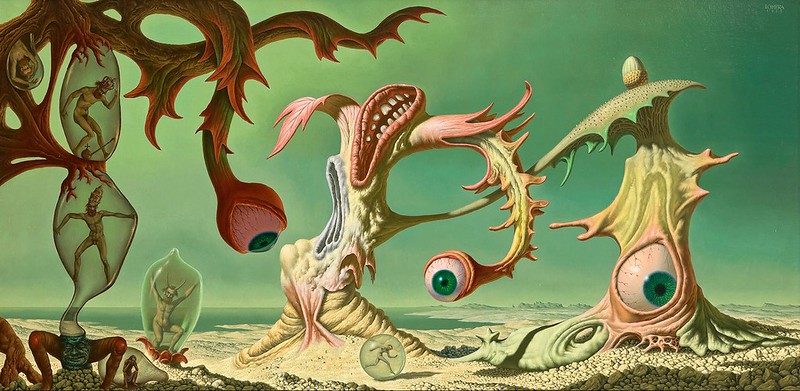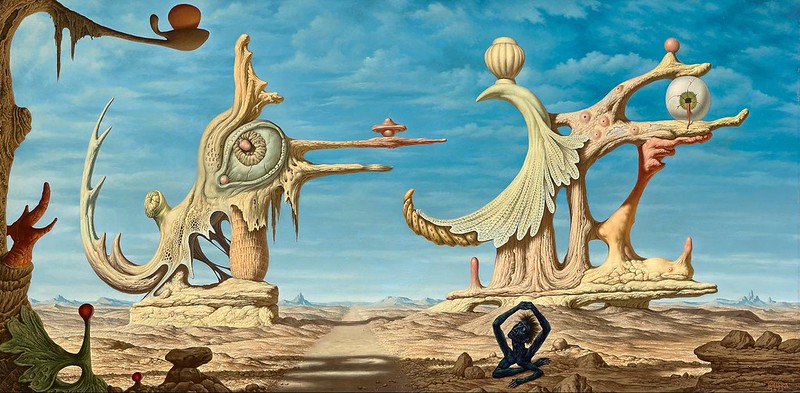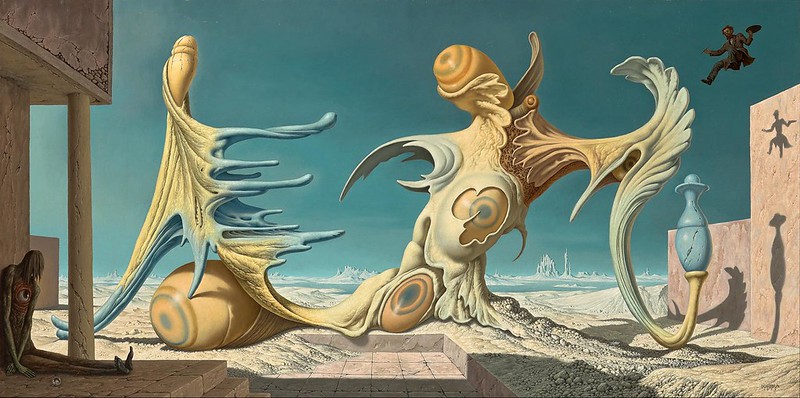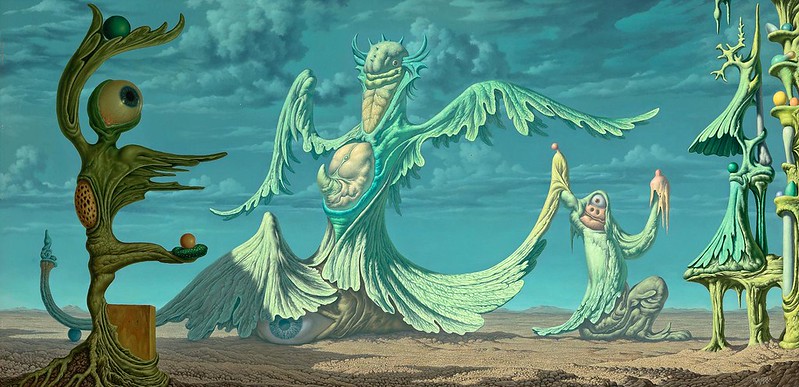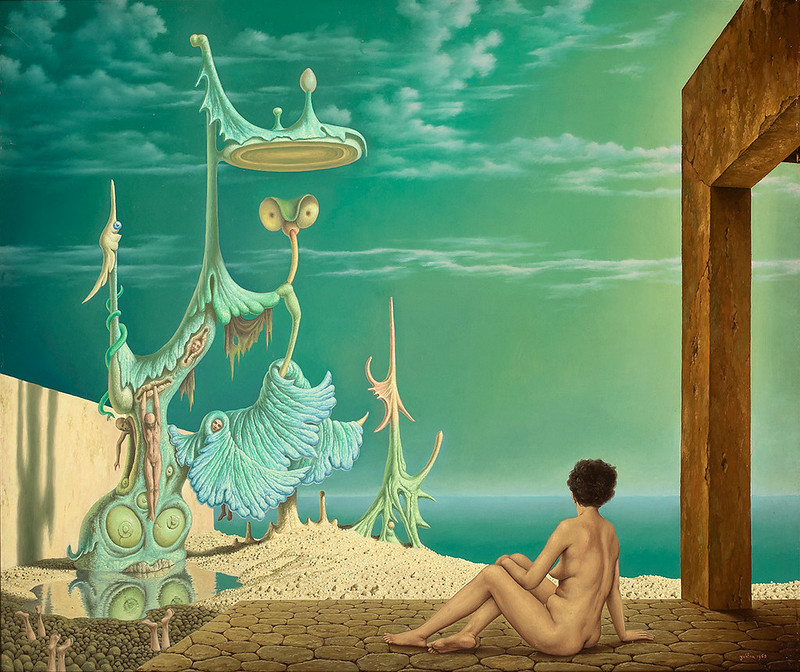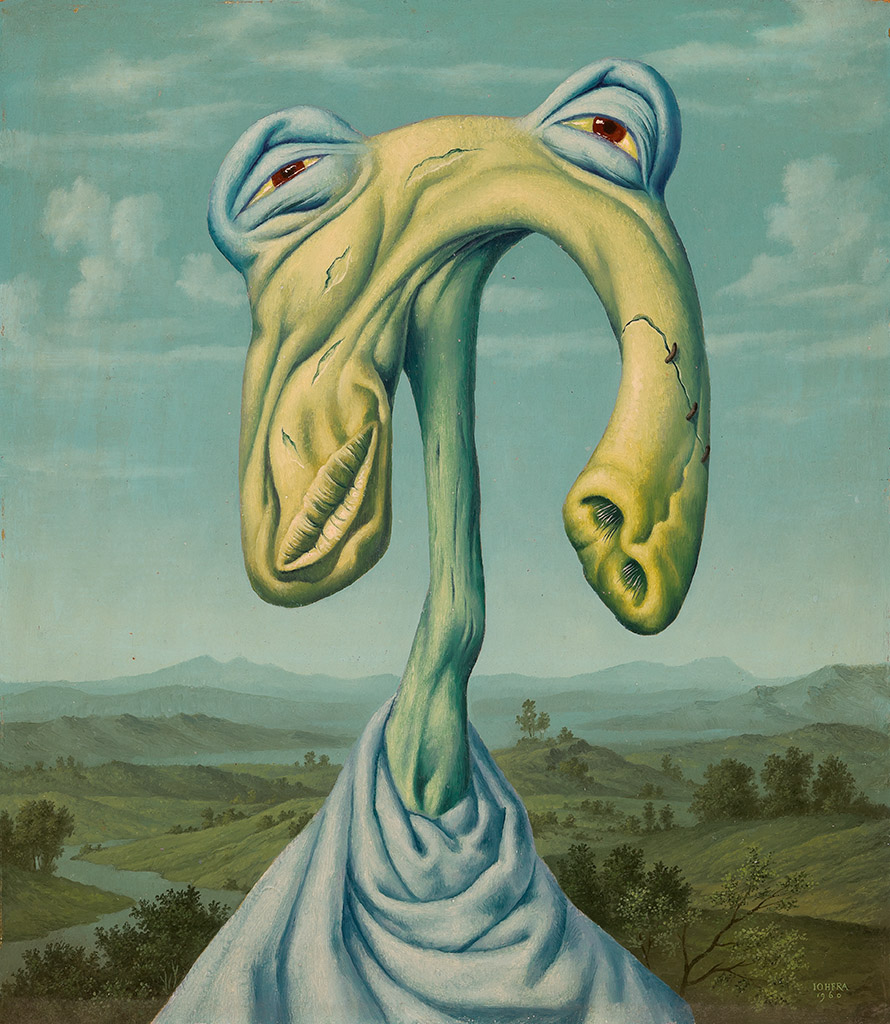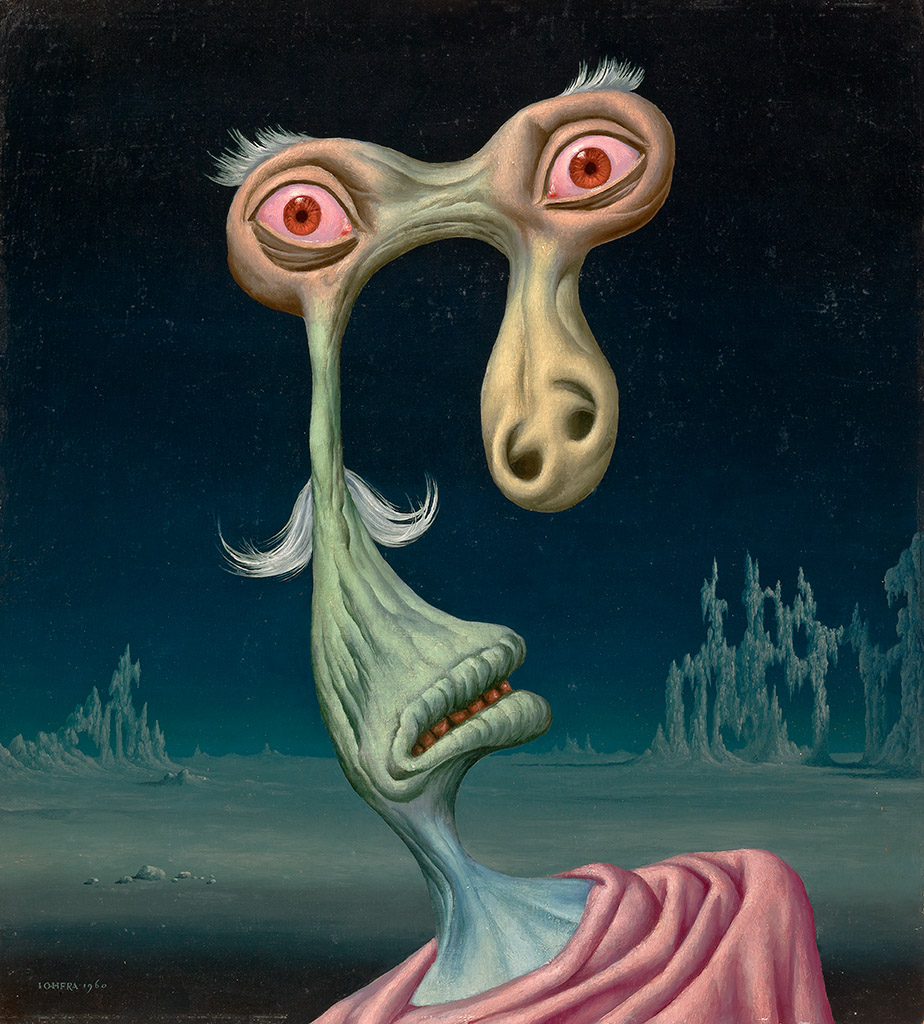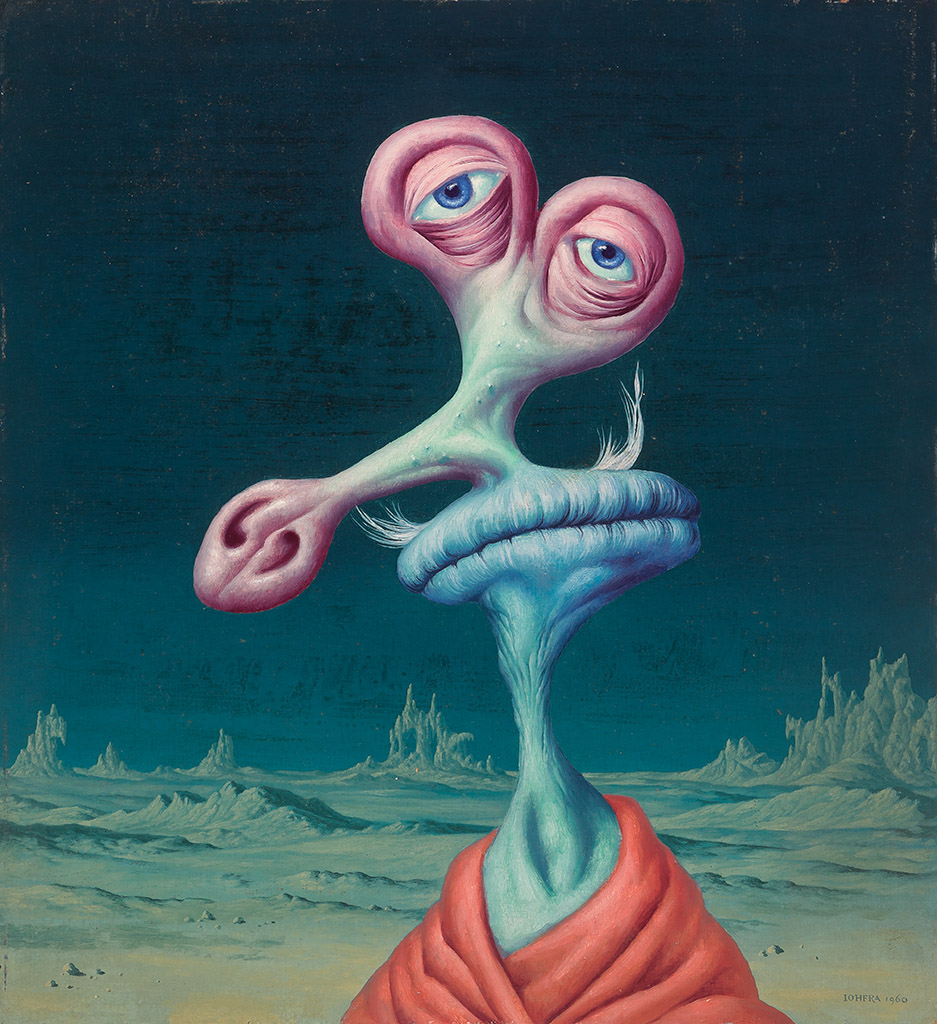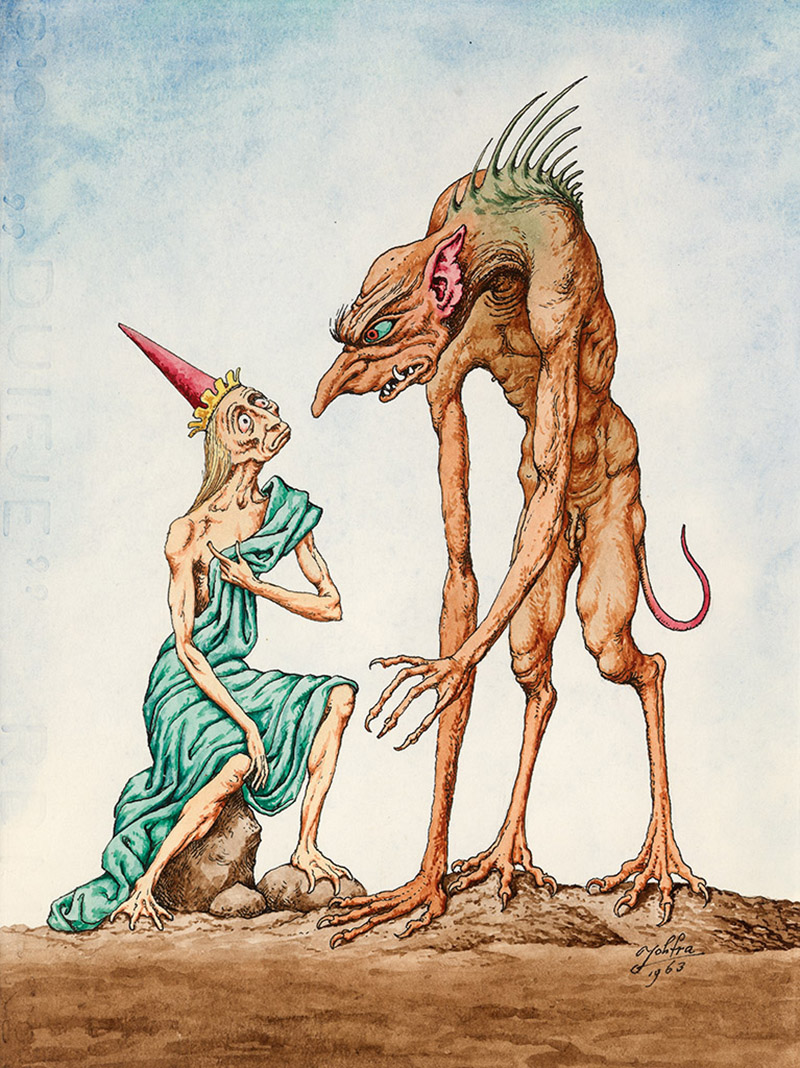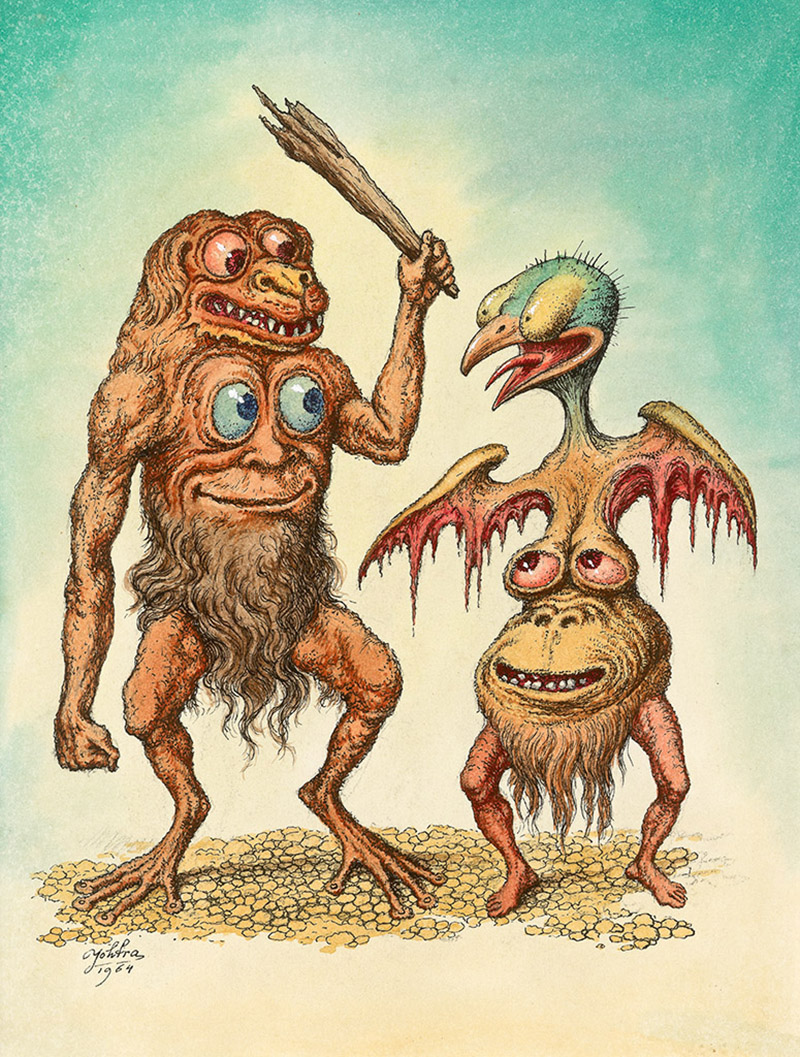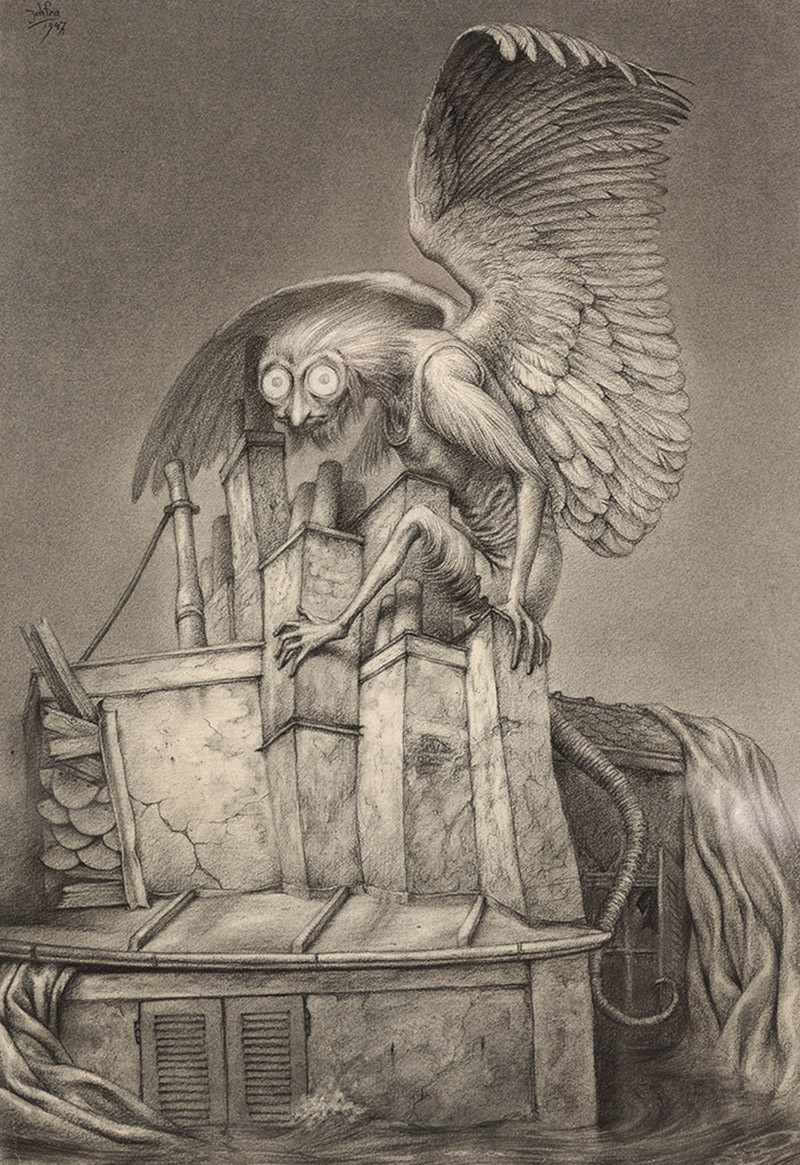Guilty Horror II
 Locus: A roleplaying game of personal horror which explores themes of guilt, morality, and mystery. It asks each Player Character what it was that he did wrong and how he feels about it, what is wrong—or right and who says so, and presents him and his companions with a strangeness and mystery around them, that somehow, they must survive. It is a game of ordinary men and women, protagonists thrust into unsettling situations and nightmares, and exposed to mysteries that perhaps will push them to confront their own secrets. Published by Cobble Path Games following a successful Kickstarter campaign, it comes in two volumes—Player Guide and Director’s Guide*—and is inspired by psychological horror films such as The Descent, Triangle, Shutter Island, and others, rather than classic slashers like Texas Chainsaw Massacre or Friday the 13th.
Locus: A roleplaying game of personal horror which explores themes of guilt, morality, and mystery. It asks each Player Character what it was that he did wrong and how he feels about it, what is wrong—or right and who says so, and presents him and his companions with a strangeness and mystery around them, that somehow, they must survive. It is a game of ordinary men and women, protagonists thrust into unsettling situations and nightmares, and exposed to mysteries that perhaps will push them to confront their own secrets. Published by Cobble Path Games following a successful Kickstarter campaign, it comes in two volumes—Player Guide and Director’s Guide*—and is inspired by psychological horror films such as The Descent, Triangle, Shutter Island, and others, rather than classic slashers like Texas Chainsaw Massacre or Friday the 13th.* Note: Neither the Player Guide nor the Director’s Guide are sold separately.
The Player Guide presents everything—well, almost everything—that a player needs to create and roleplay a character in Locus. It covers character creation, equipment, and mechanics, as well as providing examples in terms of both rules and Player Characters. The Director’s Guide re-examines various aspects of each before beginning to really explore and explain what Locus: A roleplaying game of personal horror is about. Outside of the Player Characters, Locus is about Broken Places, locations where the line between reality and the horror and emotional truth of a story has thinned to the point that they have become damaged or broken, and transformed into something else. Each is or has a Genius Locus, that in becoming damaged or broken, is transformed into a Malus Locus, a bad place which feeds off negative energies and emotions. The Malus Locus draws in outsiders and residents alike, using reminders of their old wounds and bad memories to inflict fear, terror, and pain. It manifests Monsters which remind the victims trapped inside the Malus Locus of their dark secrets and feelings of guilt, and if the monster can kill them, they leave behind Echoes of their guilt that the Monster can feed off for years. Echoes are likely to be interpreted as ghosts, and when the Player Characters enter a Malus Locus, it may already be inhabited by Echoes.
A Malus Locus consists of a single location and is actually composed of layers. The location can be large or small, and might be a single house, a neighbourhood or housing block, an oil rig or space station, or even a whole town. The layers are Layers of Reality, each layer a reflection of the one above, the same but different, darker, weirder, scarier, and worse… The deeper the Player Characters venture into the Malus Locus, the further away from reality they move, the closer to the heart of the Malus Locus they get, the greater the manifestations and signs of the unreal and the Player Characters’ Haunts—or guilty secrets—appear, and the more openly the Monster will move against them. Each Layer is separate, but bleeds into the one above and the one below, though they become more and more distinct as the Player Character descends.
There is a certain fluidity between Layers, but what determines which Layer of Reality the party is on is the number of cards they hold in their Hands. The more cards they have in their Hands, the deeper the Layer of Reality they are on or can access. This, it turns out, is the primary mechanic effect of the cards in play. In the Player Guide, the player is told that having too many cards in his Hand is not a good thing, but not why. The Director’s Guide explains that each player’s Hand of cards represents the crushing weight of the world and guilt from his secret, which whilst merely oppressive in the real world, in the Malus Locus serves to pull him further in and down…
In play, this means that the Director will need to keep track of how many cards the players hold in their Hands, so that she can tell when they transition between Layers, whether that is without their knowing or with a set piece scene. So they may need to be open about that during play. Also, as much as the players need to be rid of their cards, they also want to have a certain number of cards in their Hands in order to access the lower Layers, especially if they want to confront the Monster. It also brings in an element of Hand management into the play of Locus as each player works to reduce the number of cards in his Hand. This comes about through both roleplaying and mechanical means.
At the beginning of the scenario, a player has two cards in his Hand. He will acquire more at each hour of play; when his character experiences a jarring vision or hallucination; and when he roleplays his character acting in accordance with his Vice—which is associated with his Haunt, and thus his Secret and his Guilt. Fortunately there are more ways of discarding cards than acquiring them. For non-Haunt cards, this is a player roleplaying his character in accordance with a Virtue not his own or rolling a critical success on an Outcome Check. For both non-Haunt cards and Haunt cards, this is a player roleplaying or having his character act in accordance with his Virtue, having his character resisting the urge to act in accordance with his Haunt, and roleplaying his character actively opposing his Haunt.
Throughout, the onus is on the player to not just roleplay his character in accordance the Virtues—Temperance, Motivation, Community, and Compassion, and roleplay avoiding giving into the Vices—Temptation, Apathy, Discord, and Malice, but to be seen to do it, to signal to the Director that he is doing so, and therefore, can discard a card. Meanwhile, the Director will be presenting situations where a character can gain cards, whether they are fraught or jarring scenes or incidents where the character gives into his Vice.
What there is not though in Locus is a path to redemption. There is no real way in which a character can assuage his guilt for his Haunt, at least not in the long term. Thus it will always remain part of the character. In the short term, that is, in the limits of the scenario or campaign and its Malus Locus, there are always opportunities to act against it through the means of discarding the cards and thus reducing the potential for confrontation with the Monster. This again emphasises the brutal nature of play in Locus, which is already present in the Death Clock measuring a Player Character’s physical health and the limited degrees of Stress a Player Character can suffer and limit his drive to succeed in dangerous and horrific situations.
Throughout the Director’s Guide, the Director is supported by tools and advice to create and run a game of Locus. For the players, this includes managing their expectations and respecting their limits in what is by design a roleplaying game which has the Player Characters confronted by regrets over past events and circumstances. There is a complete guide to creating and running Monsters from the concept and the keywords—the latter tied into Locus’ four Vices, to applying the mechanics and balancing those against the Player Characters. It advises that Monsters which are too weak or too strong be avoided since one represents no challenge, and the latter too much of a challenge. It is backed up with not just a fully worked through example, but a quartet tied to the four suits of the Haunts and Vices.
Similar advice and guidance is given for setting up a game of Locus, scenarios being constructed as mysteries which first hint that something is supernaturally wrong and then second, draw the Player Characters into the Malus Locus to determine what exactly is wrong. The third and final mystery involves finding out the cause and hopefully coming up with a solution. However, the exploration of the Malus Locus may not necessarily result in identifying and repairing the issue at its heart, although that is the ideal outcome. Instead, the Player Characters might flee the Malus Locus having failed to identify or deal with its horror, plumb its depths to reach its heart and confront the Monster—hopefully to defeat the Monster, or get caught with its confines, becoming denizens who might be encountered by others later on… At the core of the Mysteries should be clues that the Player Characters can find without rolling Outcome Checks, the aim being to give them information necessary to solve them were it not for stress and their own insecurities.
Beyond some decent advice on handling Outcome Checks, conflicts, spot effects (which affect a single Player Character) and set pieces (which are primarily location-based), and how a Locus Malus reacts to the presence of the Player Characters and their actions, Locus gives the Director a lengthy—almost a third of the Director’s Guide, ready-to-play scenario. This is ‘The MFV Mulligan’. This takes place in 1995 in the North Sea with the Player Characters cast as members of the crew of the MTS Gannet, which picks up a distress call from and goes to the rescue of the fishing trawler, the MFV Mulligan. Instead of four read-to-play characters, the scenario includes detailed templates which the players are expected to customise. All four should be interesting to roleplay.
Of course, the rescue attempt takes place in the middle of a storm and on first coming aboard the trawler, it seems that the crew are missing. The trawler, initially adrift, provides the scenario with the closed environment necessary for a good Malus Locus and the descriptions of the various locations aboard the MFV Mulligan are given in general as well as Layer by Layer. Various items aboard are detailed as are the Spot Effects and Set Pieces which the Director can throw at her Player Characters. The scenario is rounded out with an introduction for the players and their characters, and cards for its Monsters, equipment, and more. The deck plans for the trawler are a little small, but easy to read still.
‘The MFV Mulligan’ is a really engaging scenario, providing what is effectively a haunted house (at sea) style Mystery and showcasing how a typical scenario is constructed for Locus with its layering of clues, mysteries, and the Malus Locus. It should engender a strong sense of atmosphere too, although it does note that the fishing industry operating out of Scotland in the nineteen nineties is not as diverse as a modern gaming audience might prefer. The scenario overall, should provide two good sessions at a minimum, and hopefully will not just serve as an example for the Director to create her own, but also as the basis for the publisher to release more
Like the Player Guide for Locus: A roleplaying game of personal horror, the Director’s Guide is a slim hardback, but roughly double the length. It is again done in deep blacks and shades of grey with slashes and splashes of red and white. There is a greater use of photographs too, but not always exactly appropriate, and some of the artwork is not quite as good a quality as in the Player Guide. The layout is perhaps slightly rough in places, and although it can be difficult to find things occasionally, there is a solid index. The game and its play is nicely supported with several examples of play and the mechanics, plus a decent summary and glossary at the end of the book.
The Director’s Guide for Locus: A roleplaying game of personal horror brings to life its world of Malus Loci, Haunts, and Monsters feeding off the guilt of others far more than the Player Guide does. Of course, that is the point of the Director’s Guide, but there is no real hint of this in the Player Guide and that is an omission which would have given the play of Locus context for the players. Nevertheless, the Director’s Guide does a fine job of exploring and showcasing its exploration of guilt and morality in the face of reality warping, if localised horror, and then its potentially quite nasty, brutal mechanics coupled with strong roleplaying potential in the Virtues and Vices. All backing them up with satisfying examples, a decent scenario, and solid advice for the Director to help her create her own Monsters and Malus Loci and tailor them to her players’ protagonists.
The combination of the brutal nature of its mechanics and its focus upon the Player Characters’ guilt and secrets means that Locus is best suited to a playing group with some roleplaying experience under its collective belt and mature players. Further, that combination, together with the fact that the guilt and secrets never truly go away and the highly localised nature of its Malus Loci means that it is also best suited to one-shot scenarios or short campaigns. For a gaming group that wants to explore the personal horror of the fallible and even the failed, Locus: A roleplaying game of personal horror pulls the players and their characters deeper and deeper into a confrontation with their characters’ guilt and its manifestation, and presents them with a fraught roleplaying challenge and experience.



